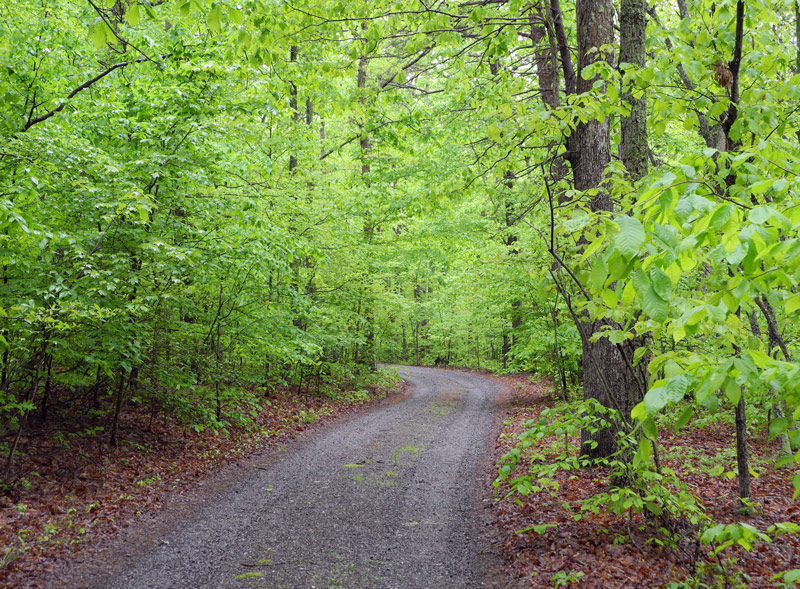
Book 4 of The Manhattan Series is taking a little longer for me to write. There are the usual distractions: foreseen and unforeseen events, changes in personal situations, updates and attentions on the earlier books… But in the meantime, there are also some unexpected pleasures and treasures around this time of year that relate to the rhythm of the seasons and the story I’m writing.
The current book, hopefully ready by this summer and tentatively titled 1640 (I’m holding to my year-dates as my book titles), starts off at the vernal equinox in—you guessed it—1640. Usually occurring on or about March 20, it’s when my Native American characters, following actual history, start to come back to the island of Mannahatta (Manhattan) from their winter inland homes to begin their “good time” of living on the verdant island. It’s the time for planting, hunting, fishing and, in general, living a full life as the months grow progressively warmer at the 40th parallel. But there are also plenty of complications and tensions, as you will see in this historical fiction book.
Getting back to the seasons, you probably know (especially if you’ve read my books) that the two equinoxes March 20, September 22) occur halfway between the two solstices (June 21, December 21). It’s when the earth, making its orbit around the sun, comes to the point where day and night are of equal duration all over the planet. My Indian characters call it “The Balance of Days.” And it’s roughly the time when, in the New York area, the arrival of spring starts, which is an important moment if you’re living with and inside nature’s rhythms.

One of the first signs of this change in today’s world (in the U.S. Northeast) is the appearance of bulb flowers like crocuses and daffodils. But they didn’t have daffodils in 17th-century New York (they’re native to Western Europe). Instead, indigenous people had wood lilies, which they used for food and medicine. Once the bulbs were cooked, those not eaten were mashed and then applied to sores, bruises, swellings or wounds.

And 17th-century Manhattanites also had flowering trees around the time of the spring equinox. Like native cherries (black, choke, pin) and the serviceberry. The interesting thing about the flower of the serviceberry (Amelanchier arborea) is that it has a horrible smell! Like a rotting animal hide. But, true to its name, the tree bears sweet, red berries that mature in summer. Those were eaten by animals and humans alike.
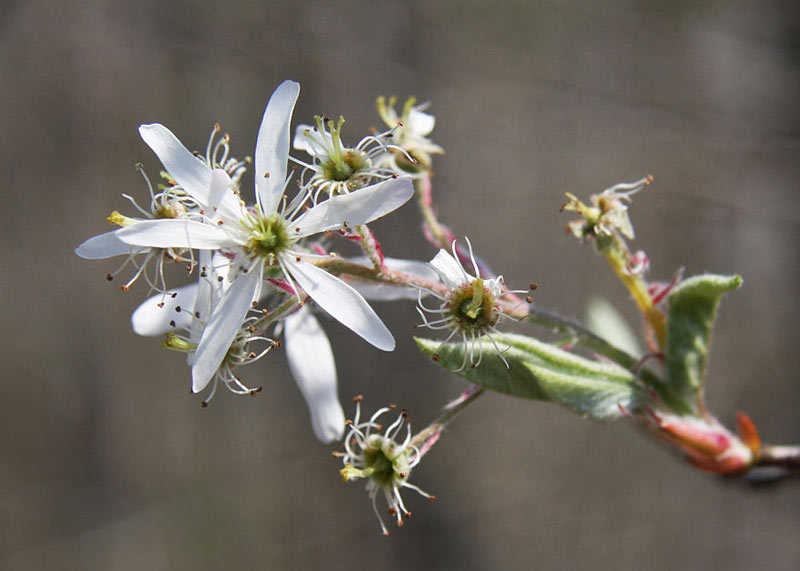
As March turned into April around historic New York, animals became more active. Especially the birds and insects. Quiet days filled only with the sounds of the wind or the gurgling of streams and the surging of the rivers started being overwhelmed with birds screeching and insects buzzing. And all these animals could be caught and eaten.
Then came the leafing out of trees (the deciduous ones). This was the most-obvious signal of spring and the coming summer. Large trees start leafing at the top of the canopy, like the maples you see below behind my house magically crowning in different shades of yellows, oranges, and reds.
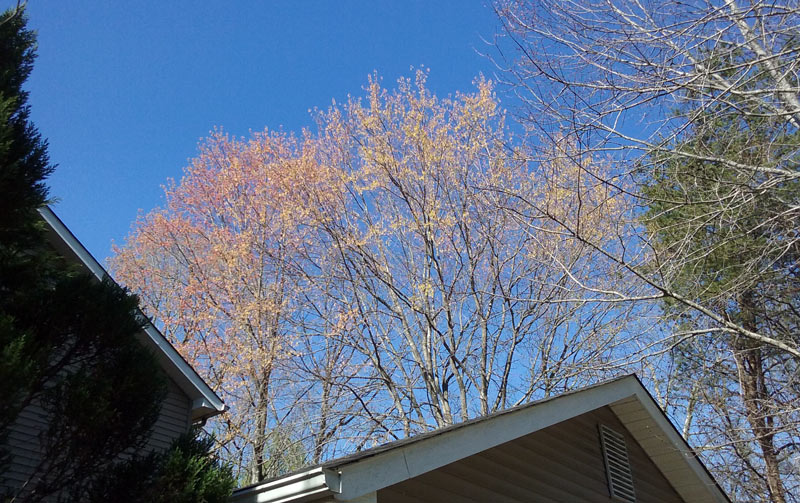
Younger saplings have their new leaves closer to the ground so they were prime food for animals like deer, and the occasional hungry human. Below, you see the miniature tulip tree leaves just starting to open in mid-April. I have many of these strong, tall trees on my property.
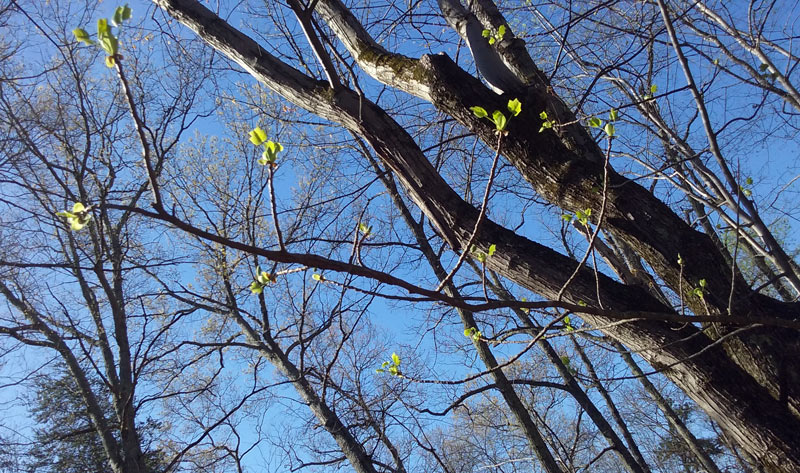
Tulip poplars were a foundation tree for the Manahate people in the 17th century and were the source of their hollowed-out canoes. I describe the long process they went through to create such a canoe in my book 1612.
Mid-April was (and still is) also the start of pine pollen season. Not welcome if you had allergies, but otherwise, pine pollen was (and is) an incredible food source. It turns out that it’s a highly concentrated “super food” full of amino acids, vitamins, minerals, antioxidants, and other beneficial compounds. The tree’s male “catkins” can be eaten as is, raw, which I have done (they’re crisp and slightly sweet). Or, the resulting pollen, which is a yellow-powder nuisance that covers everything, can be made into a paste or stirred in to thicken stews. I’m sure New York’s indigenous people did a lot of that.
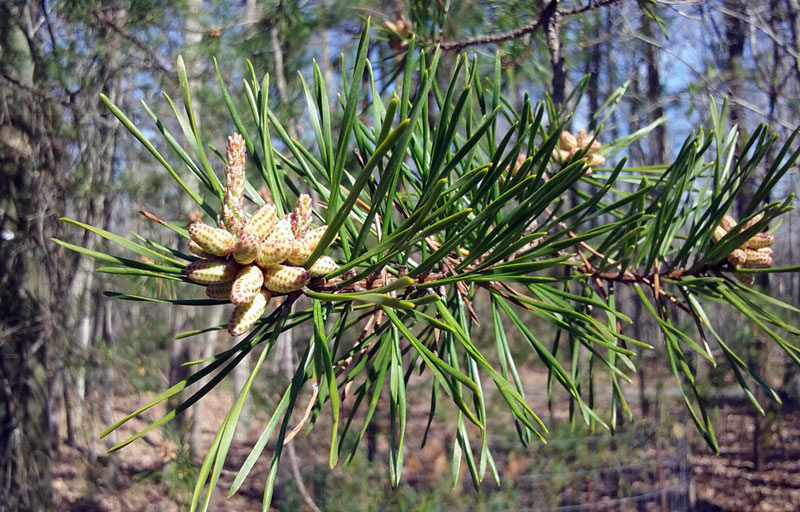
April then moves into May, and summer is soon upon us.
P.S. The image at the very top is of my driveway in the woods in spring.

*around our house, (comma)
Harald, your prose reads lyrically, it’s a pleasure to read. Now, I know why the Wood Lily mysteriously appears in our yard every year! And, yes, the pine catkins are plentiful here on the North Shore. We have 3 historically tall pine trees around our house which paint our cars like watercolors, and incite my allergies. However, I’m not quite convinced I ought to eat them!
Hi Barbara! Yes, I’ve wondered about people with allergies to things like pine pollen actually eating it. Only one way to find out! P.S.: I like “paint our cars like watercolors.” Indeed.